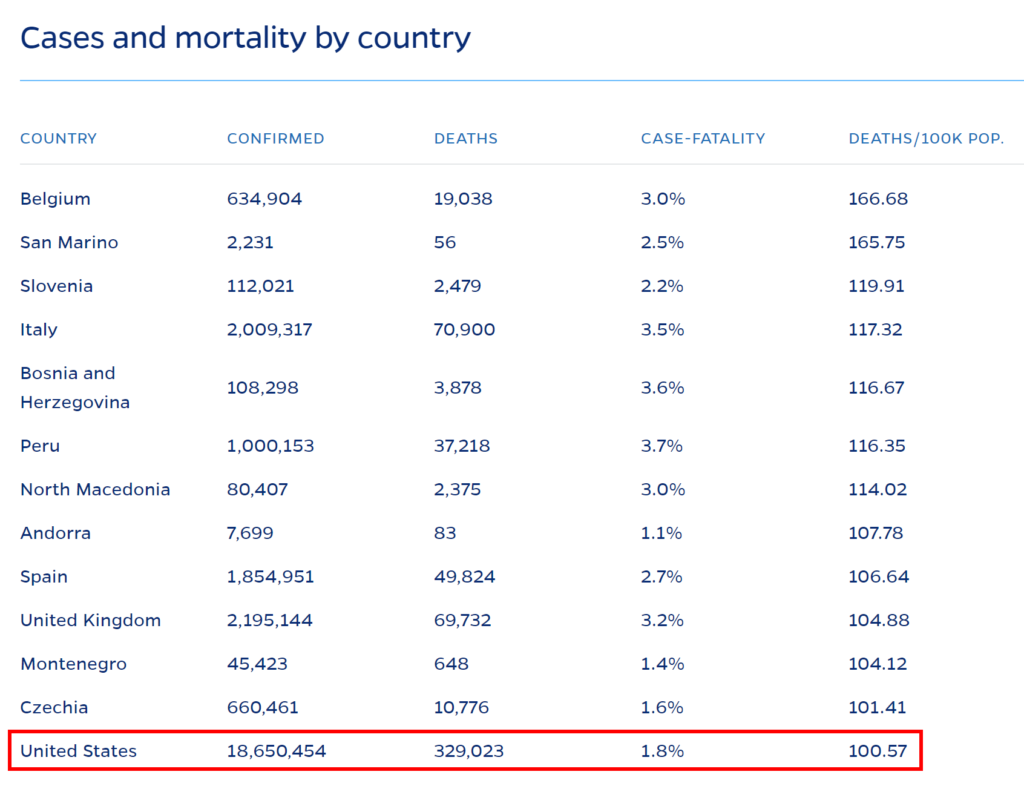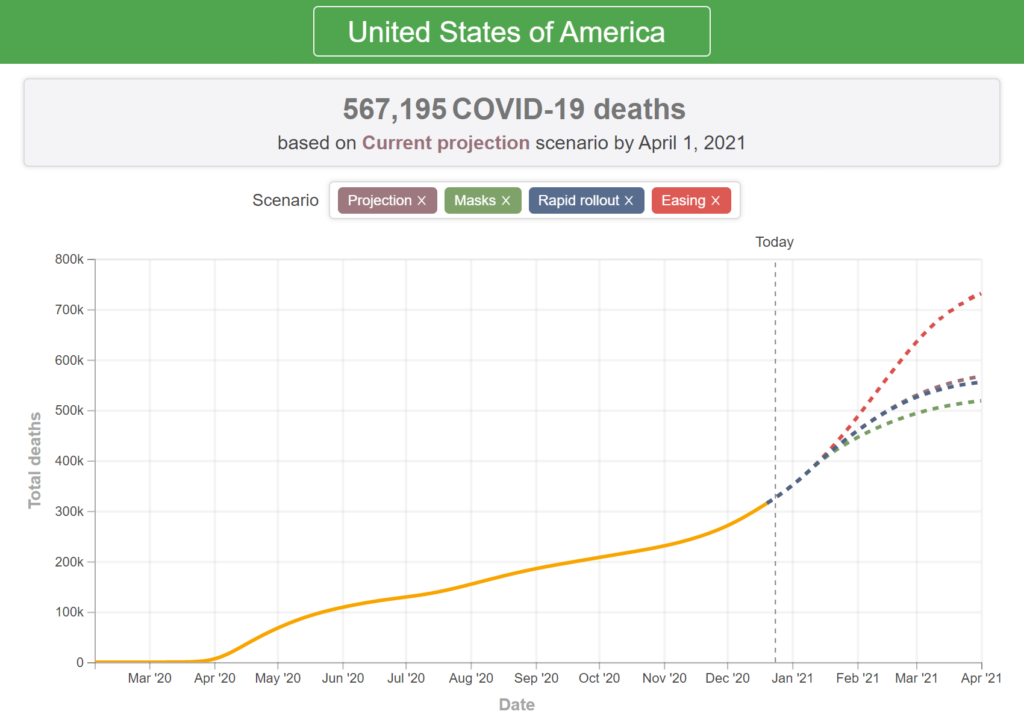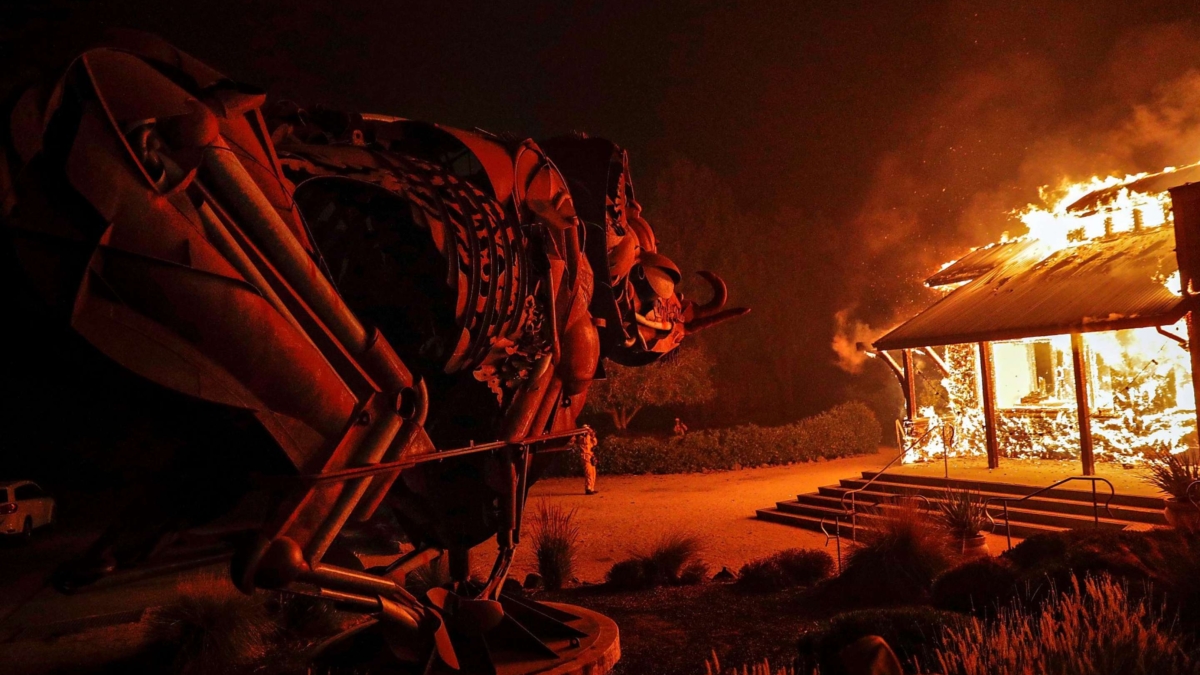U.S. Covid mortality rate exceeds 100 per 100k population – “The current exponential increase in COVID-19 is reaching a calamitous scale”

25 December 2020 (Desdemona Despair) – The per-capita death rate from Covid-19 in the United States exceeded 100 for the first time today, according to mortality data from John Hopkins University. The milestone comes on the heels of this week’s announcement from the University of Washington’s Institute for Health Metrics and Evaluation (IHME) stating that the U.S. death toll may rise to well over a half million by 1 April 2020, exceeding 567,000, with no peak in sight.
The number 100 isn’t significant from the epidemiological perspective, but it’s a grim milestone that puts the U.S. in the same company as nations like Andorra and Slovenia.

It’s very like the Year 2020 for this number to be exceeded on Christmas Day.
The IHME model also projects that the daily death rate will peak at nearly 4,000 per day in January:
“In our reference scenario, which represents what we think is most likely to happen, our model projects 567,000 cumulative deaths on April 1, 2021. This represents 252,000 additional deaths from December 20 to April 1. Daily deaths will peak at 3,890 on January 11, 2021.”
Covid is now the leading cause of death in the U.S.
By October 2020, Covid-19 had become the leading cause of death in the U.S., as reported in the Journal of the American Medical Association:
“The current exponential increase in coronavirus disease 2019 (COVID-19) is reaching a calamitous scale in the United States, potentially overwhelming the health care system and causing substantial loss of life. The news media dutifully report each day’s increase in new cases and deaths, but putting these numbers in perspective may be difficult. The daily US mortality rate for COVID-19 deaths is equivalent to the September 11, 2001, attacks, which claimed 2988 lives, occurring every 1.5 days, or 15 Airbus 320 jetliners, each carrying 150 passengers, crashing every day.”
The JAMA statement concludes by lamenting the unnecessary loss of life:
“The failure of the public and its leaders to take adequate steps to prevent viral transmission has made the nation more vulnerable, allowing COVID-19 to become the leading cause of death in the United States, particularly among those aged 35 years or older. Much of this escalation was preventable, as is true for many deaths to come. The prospect of a vaccine offers hope for 2021, but that solution will not come soon enough to avoid catastrophic increases in COVID-19–related hospitalizations and deaths. The need for the entire population to take the disease seriously—notably to wear masks and maintain social distance—could not be more urgent.”

Vaccines won’t avert the dark winter
The IHME model estimates that the arrival of vaccines won’t have a big impact on the pandemic during the early months of 2021:
“By April 1, 2021, we project that 33,200 lives will be saved by the projected vaccine rollout. If rapid rollout of vaccine is achieved, 45,000 lives will be saved compared to a no-vaccine scenario. As compared to a no-vaccine scenario, rapid rollout targeting high-risk individuals only could save 54,000 lives.”
But the model gives a very clear result for mask-wearing. The difference in mortality between the “universal masks” and the “mandates easing” scenarios is more than 213,000 lives saved:
- If universal mask coverage (95%) were attained in the next week, our model projects 49,000 fewer cumulative deaths compared to the reference scenario on April 1, 2021.
- Under our mandates easing scenario, our model projects 731,000 cumulative deaths on April 1, 2021.
Even in the best-case scenario, the vaccines won’t arrive in time to abate the pandemic in the U.S. this winter. So, mask up. Maintain physical distance. Avoid gathering indoors. Hold fast.
Check out the data here: US Covid-19 mortality JHU.


I read recently that the Sturgis motorcycle rally was a super-spreader event which infected an estimated 250,000 people above what might have otherwise been expected. Possibly more.
Given the roughly 2% mortality rate of known cases in the U.S. then a rough calculation gives an estimate of 5,000 people who have most likely met their untimely death due to that one event.
Imagine that! Thousands of people slowly suffocating to death because they were too ignorant to wear a mask.
I’ve also read that hospital staff are being verbally abused by dying patients just such as these, often with their last gasping breath, because the patient is convinced beyond all reason that the pandemic is “fake”.
What a brave new world, with such creatures in it…